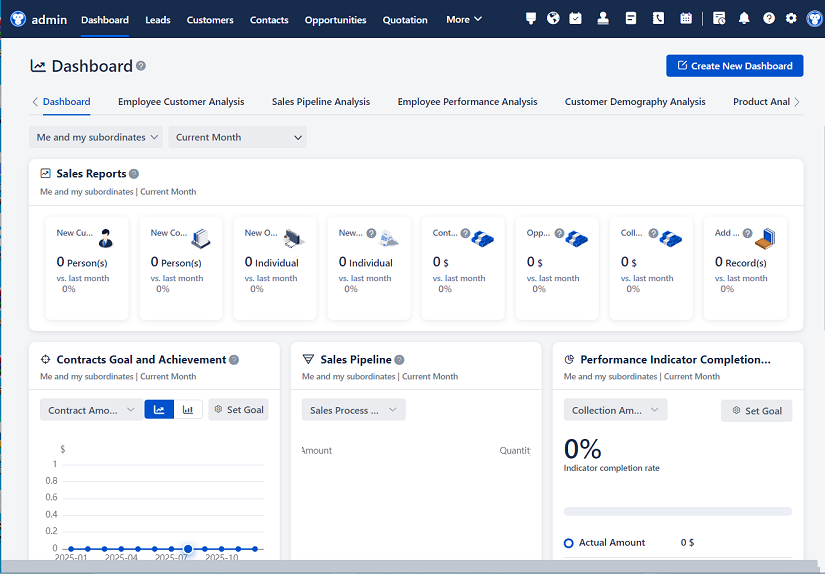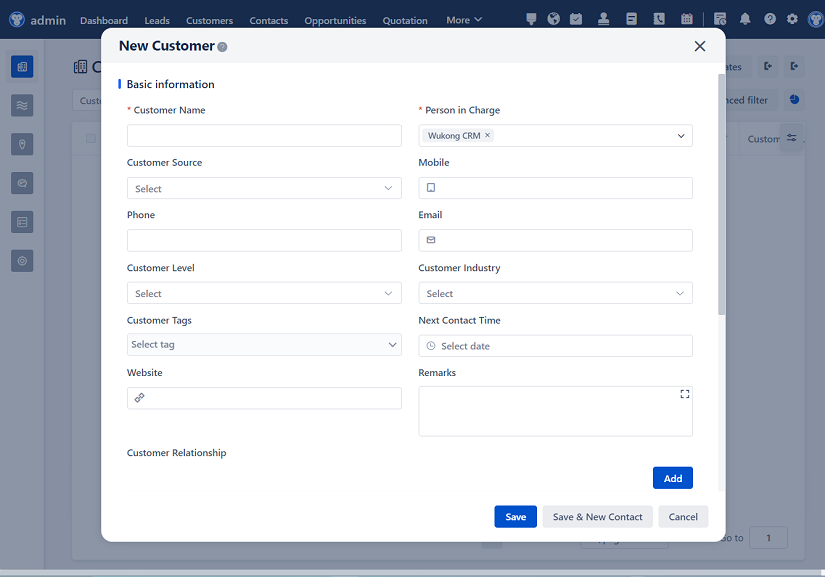
△Click on the top right corner to try Wukong CRM for free
Sure, here’s an article on the application of CRM in the banking industry, written in a conversational tone:
Hey there! So, you’ve probably heard about CRM, right? It stands for Customer Relationship Management. But what does it really mean, and how is it used in the banking industry? Let me break it down for you.

First off, imagine you’re a bank. You have thousands, maybe even millions, of customers. Each one of them has different needs, preferences, and financial goals. Now, how do you keep track of all that? That’s where CRM comes in. It’s like having a super-smart assistant who remembers everything about your customers and helps you make better decisions.

Let’s dive a bit deeper. When a customer walks into a bank, they might be looking to open a new account, get a loan, or just ask some questions. With a good CRM system, the bank can pull up all the information about that customer in seconds. This means the bank staff can greet the customer by name, remember their previous interactions, and offer personalized advice. It’s like having a personal banker who knows you inside out!
But it’s not just about face-to-face interactions. In today’s digital age, most people do their banking online. A CRM system can help banks provide a seamless online experience too. For example, if a customer logs into their online banking portal, the CRM can suggest products and services based on their past behavior and preferences. It’s like having a virtual assistant who knows exactly what you need before you even ask for it.

Now, let’s talk about the benefits. One of the biggest advantages of using CRM in banking is improved customer satisfaction. When customers feel that the bank understands them and caters to their needs, they are more likely to stay loyal. And we all know that keeping existing customers is much cheaper than acquiring new ones. Plus, happy customers are more likely to recommend the bank to their friends and family, which is great for business.
Another big benefit is increased efficiency. With a CRM system, banks can automate many routine tasks, such as sending reminders for upcoming payments, following up on loan applications, and even providing financial advice. This frees up the bank staff to focus on more complex and high-value tasks. It’s like having a robot that takes care of the boring stuff so you can focus on the fun stuff!
But wait, there’s more! CRM also helps banks with cross-selling and upselling. Imagine you have a savings account with a bank. The CRM system can analyze your transactions and see that you frequently transfer money to a different account. The bank can then offer you a better deal, like a higher interest rate or a rewards program, to keep your money with them. It’s a win-win situation: you get a better deal, and the bank gets to keep your business.
And let’s not forget about data analytics. A CRM system collects a ton of data about customer behavior, preferences, and interactions. Banks can use this data to gain insights and make informed decisions. For example, they can identify trends, predict future needs, and even spot potential risks. It’s like having a crystal ball that tells you what your customers will want next.
Of course, implementing a CRM system isn’t without its challenges. One of the biggest hurdles is getting everyone on board. Bank staff might be resistant to change, especially if they are used to doing things the old way. Training and support are crucial to ensure a smooth transition. Another challenge is data security. With so much sensitive information being stored, banks need to make sure their CRM system is secure and compliant with all the relevant regulations. It’s like building a fortress to protect your treasure.
So, how do banks choose the right CRM system? Well, it depends on their specific needs and goals. Some banks might prioritize ease of use, while others might focus on advanced analytics. It’s important to do your research, talk to other banks, and maybe even try out a few systems before making a decision. It’s like shopping for a new car: you want to test drive a few options before you buy.
In the end, the goal of CRM in banking is to create a better experience for both the bank and the customer. By understanding and meeting the needs of their customers, banks can build stronger relationships, increase loyalty, and ultimately grow their business. It’s like having a best friend who always has your back, no matter what.
Alright, I hope that gives you a good idea of how CRM is used in the banking industry. If you have any questions, feel free to ask. Here are a few that might come to mind:
Q: How does CRM help with customer retention in the banking industry? A: CRM helps by providing a personalized experience, remembering customer preferences, and offering tailored advice and products. This makes customers feel valued and understood, which increases their loyalty to the bank.
Q: Can CRM systems be integrated with other banking software? A: Absolutely! CRM systems can be integrated with other banking software, such as core banking systems, online banking platforms, and mobile apps. This integration ensures a seamless flow of information and a consistent customer experience across all channels.

Q: What kind of training do bank employees need to use a CRM system effectively? A: Bank employees typically need training on how to use the CRM system, including how to access and update customer information, generate reports, and use the system’s features. Ongoing support and refresher courses are also important to keep everyone up to speed.
Q: How does CRM help with risk management in banking? A: CRM systems can help identify potential risks by analyzing customer data and spotting unusual patterns or behaviors. This allows banks to take proactive measures to mitigate risks, such as flagging suspicious transactions or monitoring accounts for signs of fraud.
Q: Is CRM only useful for large banks, or can smaller banks benefit from it too? A: CRM is beneficial for banks of all sizes. While larger banks may have more resources to invest in advanced CRM systems, smaller banks can also benefit from simpler, more cost-effective solutions. The key is to find a CRM system that fits the bank’s specific needs and budget.
I hope these answers help! If you have more questions, just let me know. Happy banking!
Related links:
Free trial of CRM
Understand CRM system
AI CRM Systems

△Click on the top right corner to try Wukong CRM for free